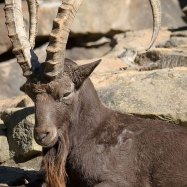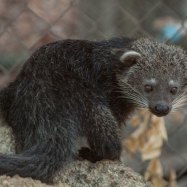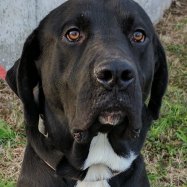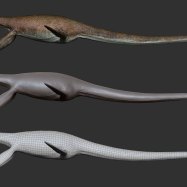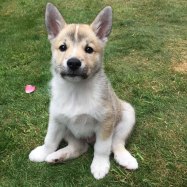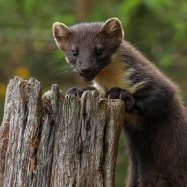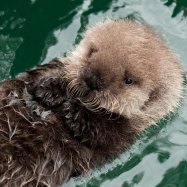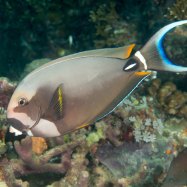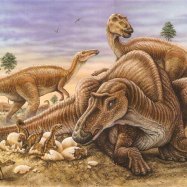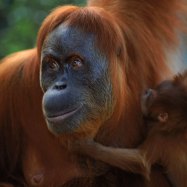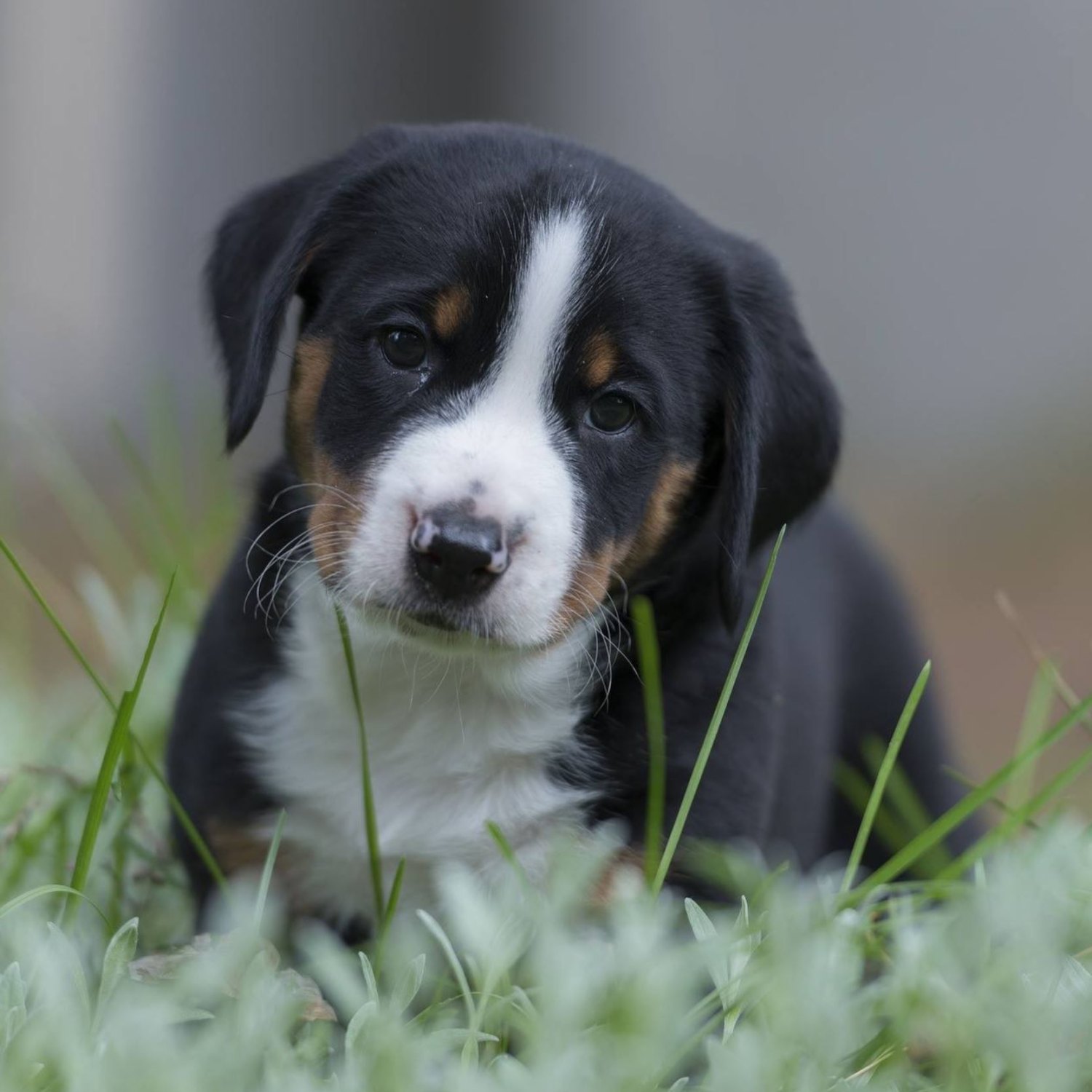
Appenzeller Dog
50-60 cm (20-24 inches)
The Appenzeller Dog is a popular medium-sized breed from Europe known for its muscular body and friendly personality. With an average length of 50-60 cm, these dogs make great companions and excel in various activities such as herding, agility, and obedience. Belonging to the Canidae family, they are loyal and easy to train, making them a perfect addition to any family. Keep them active and engaged to ensure a happy and healthy Appenzeller. #AppenzellerDog #mediumbreed #loyalcompanion
Animal Details Summary:
Common Name: Appenzeller Dog
Kingdom: Animalia
Habitat: Varies (mountains, forests, farms)
The Appenzeller Dog: A Loyal and Versatile Breed from the Swiss Mountains
When it comes to dogs, we often hear about popular breeds such as Golden Retrievers, German Shepherds, or Poodles. However, have you ever heard of the Appenzeller Dog? This lesser-known breed hails from the mountainous regions of Switzerland and boasts a unique set of characteristics that make it stand out from other dog breeds.The Appenzeller Dog, also known as the Appenzell Cattle Dog or Appenzeller Sennenhund, is a domesticated dog that belongs to the scientific name Canis lupus familiaris. This breed is a member of the larger Canidae family, which includes wolves, foxes, and other domesticated dog breeds Appenzeller Dog. They are classified under the order Carnivora, meaning they are meat-eaters, and they belong to the class Mammalia, making them warm-blooded animals with mammary glands to nurse their young.
Originating from Switzerland, the Appenzeller Dog is a proud breed that has been around for centuries. They were mainly used as herding dogs to assist farmers with their cattle and were also prized for their guarding abilities. This breed is highly adaptable and can thrive in various environments, from high mountain pastures to forested areas and even farms. Today, Appenzeller Dogs are popular for their agility, versatility, and loyal companionship.
Physical Characteristics
So, what makes the Appenzeller Dog stand out from other dog breeds? Let's start with their appearance. These medium-sized dogs have a well-built, muscular body that is built for endurance. They typically range from 50 to 60 cm (20-24 inches) in length and weigh between 18 to 25 kg (40-55 lbs). This makes them an ideal size for both outdoor and indoor living African Wild Dog.One of the most striking features of the Appenzeller Dog is their tri-color coat. These dogs have a distinct black, tan, and white coloring that makes them stand out. The black color is usually predominant, with tan markings on the face, legs, and chest, and white markings on the chest and the tip of their tail. The coat is short, dense, and weather-resistant, making it perfect for their mountainous habitat.
This breed also has a unique feature called “assessors,” which are small, sharp spikes found on their legs and underbelly. These were initially used for protection while working with cattle, but today, they are a trademark feature of the Appenzeller Dog.
Temperament and Training
The Appenzeller Dog may have a rugged exterior, but don't be fooled; these dogs have a friendly and confident demeanor. They are highly intelligent and independent, making them easy to train but also prone to boredom if not kept mentally and physically stimulated. As a result, these dogs do not do well with repetitive tasks and require a variety of activities to keep them engaged.Their high intelligence also makes them quick learners, which is why they excel in various tasks and competitions. They are known to be excellent herders, watchdogs, and even make great companions for hikers and runners. It's no wonder that the Appenzeller Dog is often seen participating in dog shows and various sporting events.
These dogs have a strong sense of loyalty and form strong bonds with their owners. However, they may be reserved with strangers, making them excellent watchdogs. Early socialization is crucial for this breed, as it helps them develop good manners and become more comfortable around unfamiliar people and animals.
Habitat and Feeding Habits
One of the most intriguing characteristics of the Appenzeller Dog is its ability to adapt to various environments. Being a mountain dog, they are well-suited to living in colder climates and thrive in high altitudes. However, they can also adapt to living in lower elevations and more temperate regions. As long as they have enough space to roam and explore, this breed can thrive in different habitats.As mentioned earlier, Appenzeller Dogs are carnivores, which means that they have a diet consisting mainly of meat. In the past, they were primarily fed by their owners, as they played an active role in herding and farming. However, today, they do well on high-quality commercial dog food, supplemented with meat and vegetables. It's essential to monitor their food intake, as they can quickly become overweight if not given enough exercise.
Caring for Your Appenzeller Dog
The Appenzeller Dog is a low-maintenance breed when it comes to grooming. Their short, weather-resistant coat requires minimal brushing, and they only need to be bathed occasionally. However, as with all dog breeds, regular dental care, nail trimming, and ear cleaning are essential for their overall health.This breed is known for their high energy levels and requires daily exercise to stay happy and healthy. A couple of walks per day, along with some playtime and training, should be enough to keep your Appenzeller Dog satisfied. These dogs are not recommended for apartment living, as they require a decent-sized yard to run around and explore.
Appenzeller Dogs and Natural Language Processing
Appenzeller Dogs are highly versatile and have a remarkable ability to understand and carry out commands, making them an ideal breed for NLP tasks. They have excellent problem-solving skills, making them ideal for activities that require a high level of reasoning and intelligence.Moreover, their unique appearance and coat coloration make them ideal candidates for image recognition and classification tasks. Their tri-color coat and distinct markings set them apart from other breeds, and their strong herding instincts also make them well-suited for tasks related to tracking and following patterns.
In Conclusion
In conclusion, the Appenzeller Dog is a remarkable breed with a rich history and versatile set of characteristics. Their loyal and friendly nature, combined with their intelligence and agility, makes them an ideal companion for any dog lover. If you're looking for a dog breed that is suitable for a variety of tasks, loves the great outdoors, and has a unique appearance, the Appenzeller Dog may be the perfect match for you. Remember, proper training and socialization are crucial for this breed, so be sure to invest time and effort into raising a happy and well-behaved Appenzeller Dog.

Appenzeller Dog
Animal Details Appenzeller Dog - Scientific Name: Canis lupus familiaris
- Category: Animals A
- Scientific Name: Canis lupus familiaris
- Common Name: Appenzeller Dog
- Kingdom: Animalia
- Phylum: Chordata
- Class: Mammalia
- Order: Carnivora
- Family: Canidae
- Habitat: Varies (mountains, forests, farms)
- Feeding Method: Carnivorous
- Geographical Distribution: Switzerland
- Country of Origin: Switzerland
- Location: Europe
- Animal Coloration: Tri-color (black, tan, and white)
- Body Shape: Medium-sized, muscular
- Length: 50-60 cm (20-24 inches)
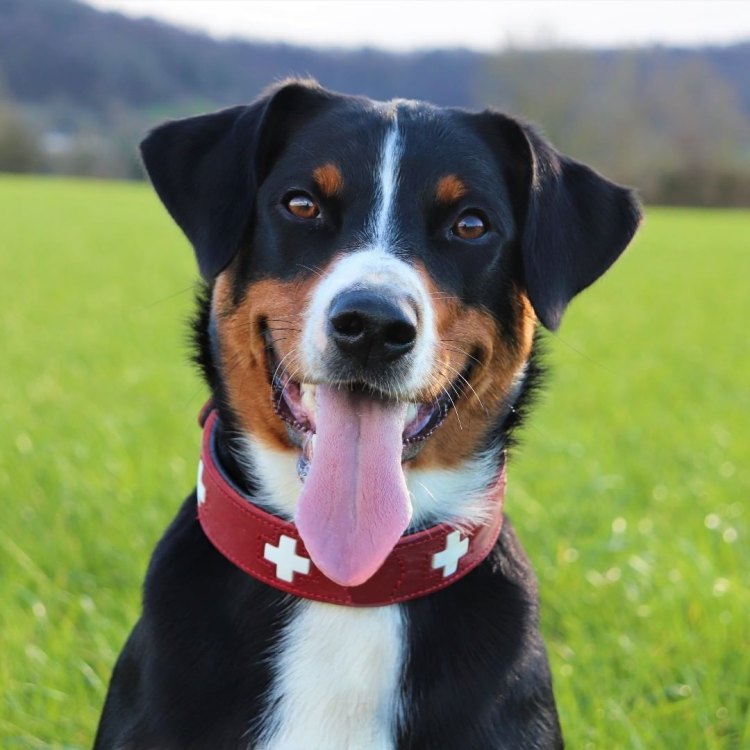
Appenzeller Dog
- Adult Size: Medium
- Average Lifespan: 12-14 years
- Reproduction: Sexual
- Reproductive Behavior: Polygamous
- Sound or Call: Barking
- Migration Pattern: Non-migratory
- Social Groups: Pack
- Behavior: Active, intelligent, friendly, protective
- Threats: None
- Conservation Status: Domesticated
- Impact on Ecosystem: None
- Human Use: Companion dog, herding dog
- Distinctive Features: Tri-color coat, alert expression, muscular build
- Interesting Facts: The Appenzeller Dog is one of the four Swiss Mountain Dogs. It is known for its agility and herding abilities.
- Predator: None
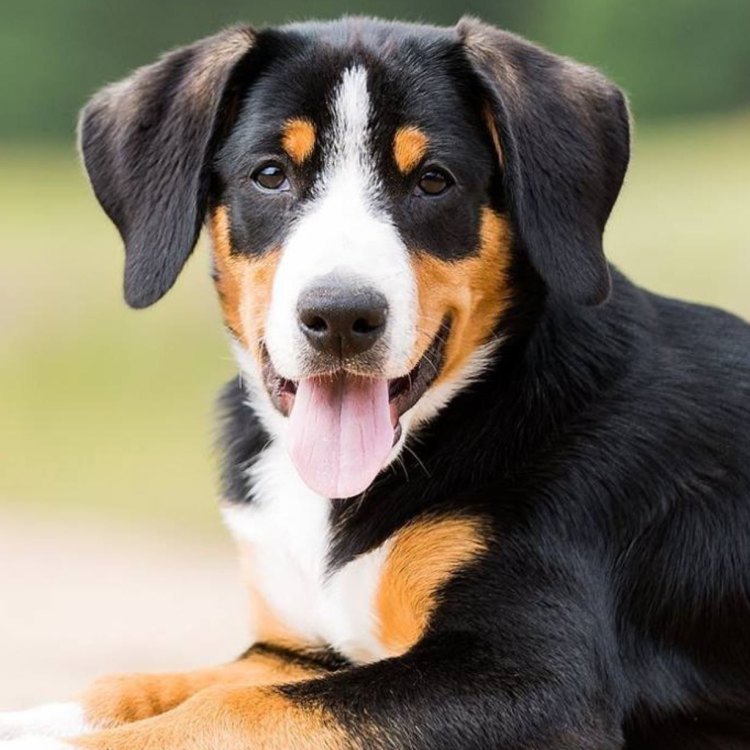
Canis lupus familiaris
The Fascinating Appenzeller Dog: A Spirited Breed with a Rich History
Nestled in the picturesque Swiss Alps lies a small yet mighty breed of dog: the Appenzeller. Part of the Swiss Mountain Dog family, the Appenzeller is a medium-sized dog with a distinctive tri-color coat and an alert expression that captures the hearts of all who meet them.But there is more to this breed than just their striking appearance. The Appenzeller Dog has a rich history and is known for its agility, intelligence, and herding abilities PeaceOfAnimals.Com. In this article, we will take a closer look at this unique breed and explore their fascinating traits and characteristics.
Breed Profile
The Appenzeller Dog is a medium-sized breed, with adult dogs weighing between 50-70 pounds and standing at 18-22 inches tall. They have a lifespan of 12-14 years and are known to be an active and healthy breed with minimal health issues.
This breed is classified as a domesticated dog, with no current conservation status. They are primarily used as companion dogs and make excellent family pets. They have also been used historically as herding dogs due to their high energy levels and intelligence.
Reproduction and Behavior
Like most domesticated dogs, the Appenzeller Dog reproduces sexually and is polygamous. They have a natural instinct for herding and are known to be active, intelligent, and protective. These qualities make them ideal for both companion and working purposes Angora Ferret.
The Appenzeller Dog is a highly social animal and prefers to live in packs. As such, they thrive in homes with other dogs or with a family that can provide them with ample socialization and attention. They also have a natural tendency to bark, making them great guard dogs.
Distinctive Features
One of the most striking features of the Appenzeller Dog is its tri-color coat. The coat can vary in color but typically includes a blend of black, tan, and white. This unique marking is a result of the breed's mixed ancestry, which includes Mastiffs, Spaniels, and Sheepdogs.
In addition to their coat, Appenzeller Dogs have an alert and intelligent expression that showcases their high level of intelligence. They also have a muscular build, which gives them the agility and strength needed to work in the mountains.
Interesting Facts
The Appenzeller Dog is one of the four Swiss Mountain Dogs, which also includes the Bernese Mountain Dog, Entlebucher Mountain Dog, and Greater Swiss Mountain Dog. These four breeds share similar characteristics, such as their loyalty, intelligence, and working abilities.
The Appenzeller Dog was originally bred in the Appenzell region of Switzerland for their herding skills. They were used to drive cattle and guard farms against predators, making them an invaluable asset to Swiss farmers.
Human Use
Today, the Appenzeller Dog is primarily used as a companion dog and is known for their friendly and affectionate nature. They make excellent family pets and are great with children when socialized properly. They are also used as therapy dogs due to their calm and gentle demeanor.
However, the Appenzeller Dog's herding instincts are still prevalent, and they can excel in dog sports such as agility, obedience, and tracking. In some parts of Europe, they are still used as working dogs for farm tasks.
Threats and Impact on the Ecosystem
One of the unique traits of the Appenzeller Dog is that it has no natural predators. Their natural agility and protective nature make them a tough opponent for any potential predators in their environment.
In terms of their impact on the ecosystem, the Appenzeller Dog has a minimal effect. They are not a threat to local wildlife and are not typically used for hunting purposes.
Conclusion
The Appenzeller Dog is a fascinating breed with a long history and impressive characteristics. Their agility, intelligence, and friendly nature make them an excellent addition to any family. Their distinctive tri-color coat and muscular build make them stand out in any crowd.
As they continue to gain popularity around the world, the Appenzeller Dog remains a loyal and hard-working breed that is deeply rooted in the Swiss culture. Whether as a companion dog or a working dog, the Appenzeller is sure to bring joy, love, and companionship to any household lucky enough to have them.
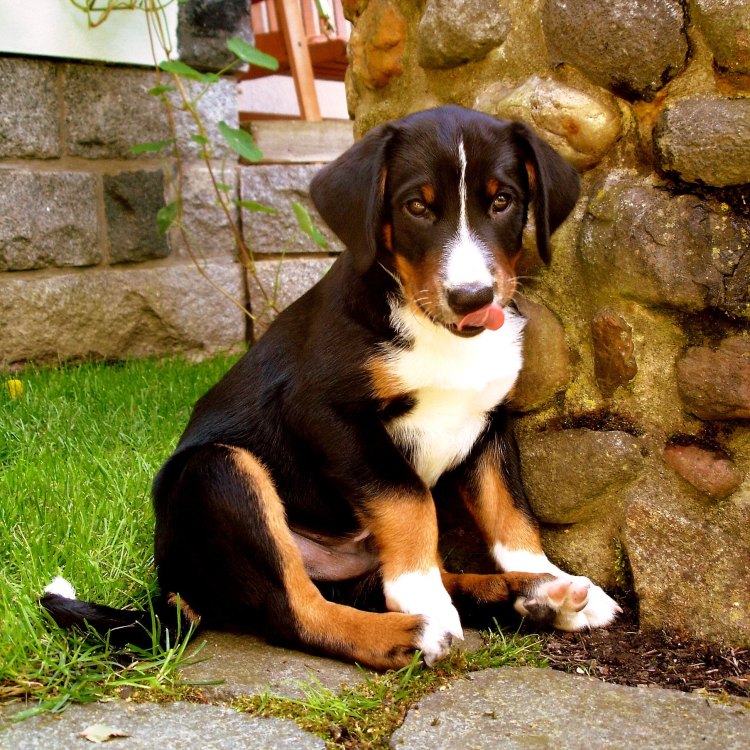
The Appenzeller Dog: A Loyal and Versatile Breed from the Swiss Mountains
Disclaimer: The content provided is for informational purposes only. We cannot guarantee the accuracy of the information on this page 100%. All information provided here may change without prior notice.

